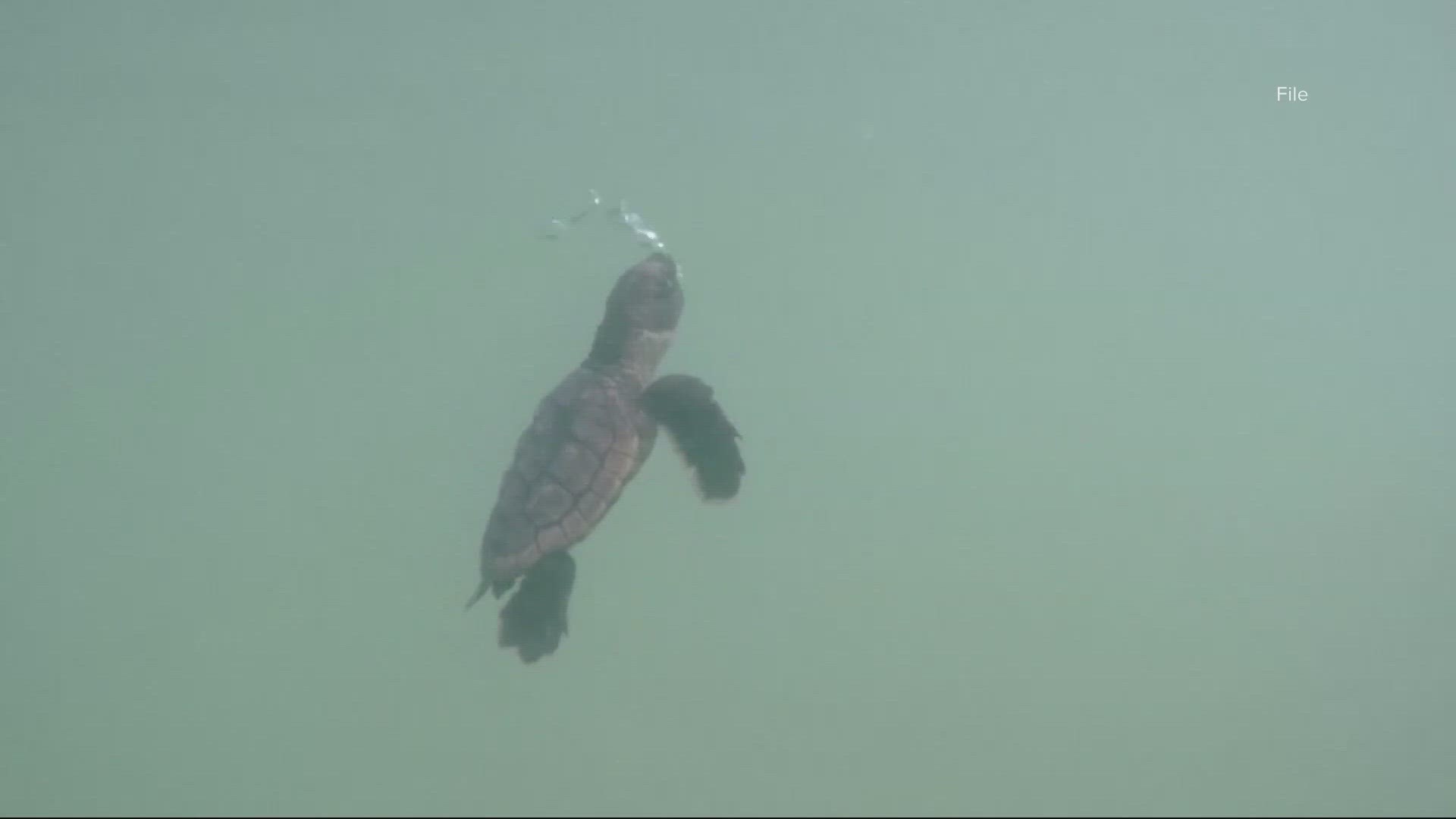PONTE VEDRA BEACH, Fla. — Everyday during sea turtle nesting season, from May to October, volunteers with the Ponte Vedra Sea Turtle Patrol ride along 6 miles of beach in St. Johns County checking established nests and looking for new mothers.
Sunday morning they found tell-tale marks on the sand that meant a mother sea turtle had come up from the ocean and nested on the beach.
“It’s always exciting to see those tracks and think oh we got another nest, another 100 eggs or so," Sandra Stam, a lead volunteer with the Ponte Vedra Sea Turtle Patrol, said.
Once volunteers find a nest, they set up stakes, record the nest’s coordinates, measure the distance from the water and record everything, including the turtle’s species, in a database. A metal grate, large enough for the babies turtles to crawl through, is also placed over the nest to deter predators.
“This is a loggerhead turtle that we saw this morning because you can see the way it walked, the commas," Stam said.
That data then goes then helps the Florida Fish and Wildlife Conservation Commission monitor how many turtles are nesting and whether the specie’s numbers are growing or declining.
The group has a federal permit to touch turtle nests and eggs, which otherwise violates state and federal laws.
“This is an endangered specie. If we don’t help it survive, they’re not going to survive," Stam said.
The group monitors 6 miles of sand in St Johns County. So far for the 2023 season 25 nests have been found. Last season in 2022, the group found over 100 nests and in 2021, around 78 nests.
Once the eggs are laid, it can be anywhere from 45-65 days until the babies emerge.
“It’s so exciting I can’t explain it, they just boil out and it’s so cute and they just run like heck to the beach," Stam said.
Volunteers also spend time cleaning up trash left behind on the sand, so turtle babies can have the best chance at making it to the water.
“People have to think about the environment and what they want for their children and grandchildren," Stam said. "Leave only your footprints on the beach not trash and destroyed sand."
Nests are also available for adoption for anyone looking to help with conservation efforts.

